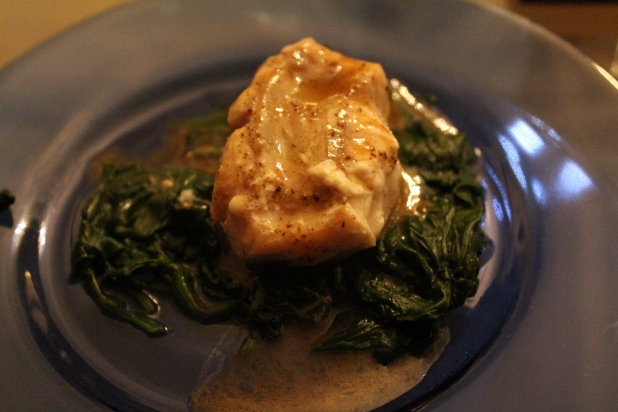The Bash, 71 West Green Rd, London N15 5DA
30 October 2015
When we arrived at The Bash, at just after 7 on a Friday evening, we were the only customers – usually a bad sign in a restaurant. Not so in The Bash. With mixing decks against one wall, tv screens and mirrors abound, and a couple of ornate golden thrones positioned expectantly behind a velveteen curtain, it was clear that the party was on its way to Seven Sisters; we’d simply arrived embarrassingly early.
The Bash serves ‘Congolese and African cuisine’, so we were keen to sort the chef’s specialities from the more general crowd-pleasers. Nigerian Guinness was the best we could do from the drinks list. It’s almost exactly like Guinness, but it’s been escorted out of Ireland, marched over to Nigeria, and then shepherded back to the UK, which makes it much stronger (and yes, they drink it in the Congo). Sophie opted for a large red wine, and large it was: approximately half a bottle. A not unpromising start then, and we turned to the menu.
Deciding to hedge our bets, we went for a mix of dishes between us. The chicken in peanut sauce sounded a safe option to everyone, and it proved to be rich without being claggy. Ntaba, or grilled goat, had a delicious barbecue flavour, very smoky, lightly spiced, dark in colour, and moreish. The grilled freshwater tilapia was served whole, slow-cooked with onion and tomato, and pulled pleasingly away from the bone with a good measure of moistness. It was served with a selection of chilli sauces, one of which was ferociously hot – though I won’t spoil it for you: you’ll have to visit and brave your own game of sauce roulette for that.
The side dishes were a little unpredictable. ‘Sweet potato’ was actually fried and baked plantain on this occasion, but we pretended not to notice. The revelation was the Kwanga: cassava bread, another member of the fufu family which we’ve laboured through on countless other occasions. In appearance this particular version was akin to the Cameroonian tentacled version we had recently in Deptford, which was one of the worst of the lot, being rubbery, dry, and confusing. Incredibly, The Bash’s version was not bad. It was well balanced, lightly salted, moist, and entirely edible. We didn’t finish it, but we could have, and that’s the point. Fufu is the filling food of much of the world, just like the humble potato here. And, just like our subterranean staple, it turns out fufu can be made palatable in the right hands (admittedly, not ours), so well done The Bash.
We’d gone in with low expectations, which can be great preparation for this sort of thing. It may have been the Nigerian Guinness, huge wines, sparkling setting ,or the fact that we’d managed fufu, but we emerged into the night well fed, and with a newfound sense of optimism.
Food: 3/5
Atmosphere: 3/5

 Steve’s starter was a miniature version of Langouste à la vanille, the national dish of Comoros. Not that you’d know that if you were to read the “Vanilla and shellfish” entry in Niki Segnit’s
Steve’s starter was a miniature version of Langouste à la vanille, the national dish of Comoros. Not that you’d know that if you were to read the “Vanilla and shellfish” entry in Niki Segnit’s 
